How To Make A Clubhouse
The audio-based social networking app Clubhouse is a hot topic. What is it and how can you create something like it? In this article, we dissect the audio-based social networking trend and discuss how to build an app like Clubhouse. For the cost to develop an app like Clubhouse, scroll to the bottom of the article.
What's Clubhouse?
In a nutshell, Clubhouse is an invite-only blend of podcasts, Twitter, and phone calls you can listen in on without legal repercussions. In the pandemic era when people are starved for live human interaction, the acclaim Clubhouse has received is of little surprise.
How does it work?
Clubhouse is what people are now calling an audio social network. Having registered with Clubhouse, a user can choose topics they're interested in and jump into dedicated rooms to listen to people talk about those topics. It's possible to join the conversation as a speaker if the room owner allows it.
Basically, Clubhouse is like an audio Twitter with restricted commenting — some Twitter users choose to allow anyone to comment on their tweets and others decide to filter conversation participants and set tweets to read-only for outsiders.
Clubhouse also has certain similarities to Discord in that it uses separate rooms and was primarily developed for audio communication. Discord also has text chats, but it's also a bit more complicated to navigate than Clubhouse.
Right now, Clubhouse is in beta, which seems to be the reason for the app's invite-only policy. However, getting an invite seems relatively easy — every user gets two invites to send out after registering and more when they actively use the app.
Why is Clubhouse so popular?
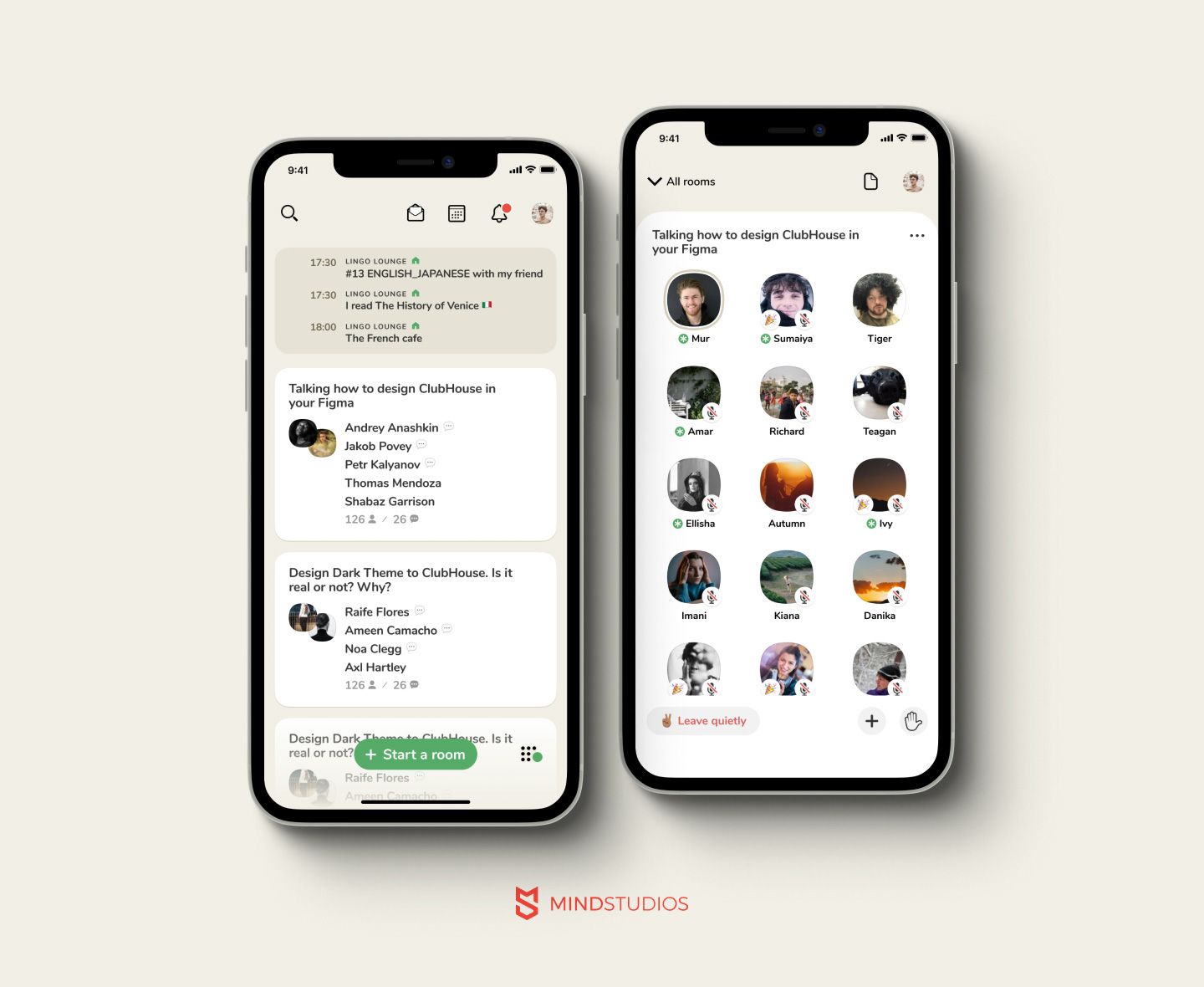
We can detect three main reasons for the sudden rise of Clubhouse.
-
Clubhouse is the only app of its kind, and the novelty pulls users in like moths to a flame.
-
Clubhouse had a great start thanks to celebrities and tech innovators who were the first to get and use invites — a smart move for any social network.
-
Clubhouse owners have caught the right moment to launch an audio-based social network app.
In the midst of a global pandemic, people all over the world are feeling disconnected, lonely, and hungry for live interaction. Zoom meetings with colleagues, friends, and family aren't cutting it anymore, and reading messages and posts on other social networks only makes us more anxious.
And here's Clubhouse, a podcast but not a podcast, an audio Twitter that's not exactly Twitter and a place where a regular person can sort of interact with anyone, be it their incredibly funny neighbor or Elon Musk. Besides, it's the new shiny thing and it's being promoted by a selection of tech innovators, business geniuses, and celebrities. What's there to not become popular?
Monetization: How does Clubhouse make money?

Revenue is a tricky thing when it comes to social networks. Ads are the easiest to implement but generally, ads irritate users to no end, making their experience less satisfying.
In the case of Clubhouse, for now, it's free. However, according to its creators, the app is in the process of implementing monetization for creators in the way of tickets, subscriptions, and the like. This will allow users to earn on Clubhouse and it will also possibly allow Clubhouse to earn:
- by taking a small fee from each in-app transaction
- by making accounts that can be monetized premium
It's yet unannounced which option it will be, though.
There's also an option to earn by offering premium listings. In the Clubhouse feed, users see active rooms in their selected topics, so it's possible to place paid rooms at the top so that users see them first.
Steps to make an app like Clubhouse
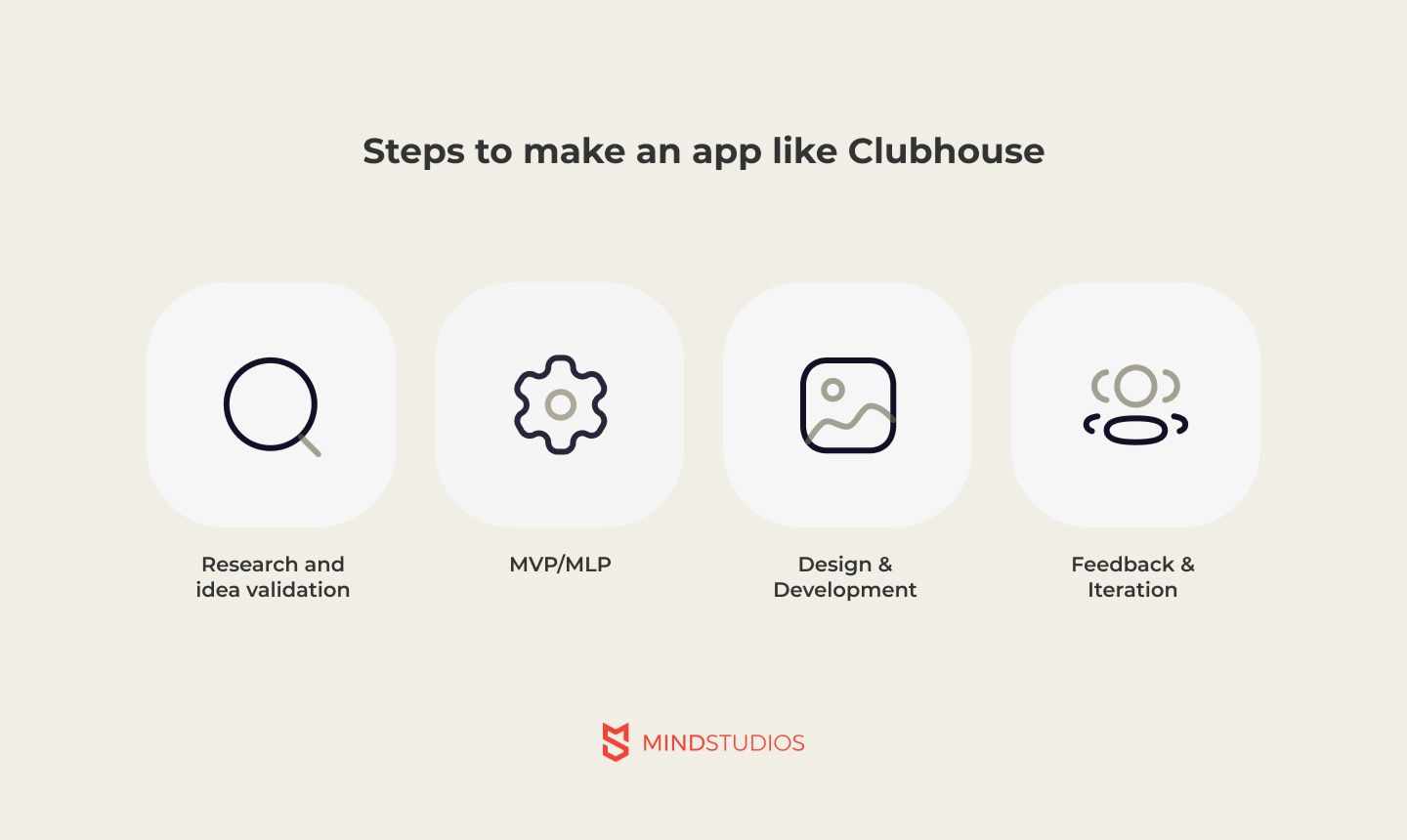
Building an app is no trifling matter so let us walk you through the process you'll probably face when you decide to make an audio social media app like Clubhouse.
Step 1. Research and idea validation
Before pouring in a not insignificant sum of money, anyone — whether a startup owner or an established business person — needs to make sure that their idea will be able to survive on the market.
If you decide to outsource your app development, you'll get help from the project manager and the team. An experienced PM will assist you in assessing your strong and weak points, finding a unique solution to your target users' problem, and aligning the future app with your business goals.
You'll need to research other players on the market — your competitors. Speaking about how to make an audio social media app like Clubhouse, at the moment, Clubhouse is a unique solution. It has no direct competitors or known analogs.
Twitter has launched audio tweets for its iOS app users in June 2020 but that's not the same as what Clubhouse does.
Clubhouse is also different from podcasts, not only in that it's broadcasted live but also because people listening in Clubhouse rooms can ask to participate in discussions.
The closest service to Clubhouse in this way would probably be Twitch. However, Twitch is a video streaming service and watchers can only participate in the stream via text messages in a chat. So it's also not exactly the same as Clubhouse.
Few or no analogs means it's the prime time to build an app like Clubhouse but with a twist.
Step 2. MVP/MLP
The fast-moving industry today makes it a challenge to stay relevant when app development can take up to a year on average. That's why most development companies will offer you to launch a minimum viable product, or an MVP.
An MVP is a version of your app that has only the core features and is launched with some kind of limits, for example, in a certain geographic area or for a limited number of users. In game development, it's called beta.
At the pre-development stages, you and the team will discuss which features to include in the MVP.
Clubhouse itself isn't yet a complete product, which is evident by its lack of so much as a website — right now, the landing page is practically bare and only has a link to the Apple App Store.
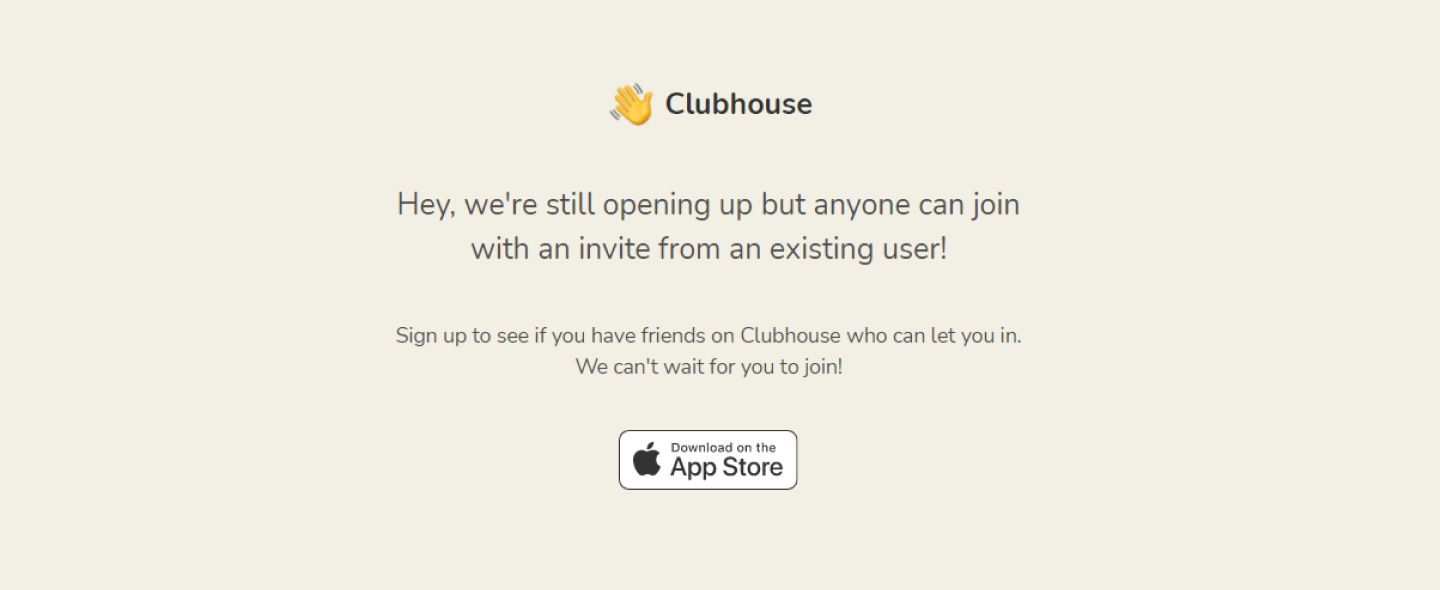
Clubhouse itself is basically an MVP, a version for the first open testing by ordinary users. Another evidence of this is the lack of popular features users expect from social networks these days — text messages, video support, fancy design, etc. These features may or may not be added in the future based on the users' feedback and the app's market performance.
Feature-wise, a Clubhouse-like social media platform seems pretty simple to develop, but don't be fooled — some of these features are high-end and not the easiest to build.
Features for a Clubhouse-like app MVP
| Feature | Description |
|---|---|
| Onboarding | A place to quickly get users acquainted with your app's features. |
| Sign-up/log-in | You can integrate email services or social networks to make signing up easy for users. |
| Interests | Let users select topics they're interested in (unless you want to develop a mobile app similar to Clubhouse but for a niche topic). |
| Profile | A place where the user's information is displayed. Clubhouse doesn't offer a lot of info — only a name, icon, and optional links to Twitter and Instagram. It might be reasonable to add more. |
| Rooms | Rooms are where all the communication takes place. Rooms can be open for all to listen to or they can be private. Any user can create a room of their own to converse with someone or speak by themselves to an audience. |
| Feed | In Clubhouse, the feed is where users see active rooms from users and topics they're subscribed to. |
| Calls | An audio chat app needs high-quality audio streaming for multiple users, with moderation and an option to request speaking rights ("raise a hand"). |
| Topics | To make it possible for users to find interesting rooms, Clubhouse offers a large list of topics. Speakers assign topics when creating rooms and listeners can find rooms by topics. It's a simple and intuitive system everyone is acquainted with. |
| Moderation | Moderation is vital for any social network, be it text-based or audio-based. There need to be moderation rights for room owners, obviously, but an app admin also needs to be appointed to monitor user reports and ban rooms that engage in hate speech or bullying. |
| Reminders/notifications | If you're planning to create an audio conversation app like Clubhouse that only has live conversations that aren't recorded or stored anywhere, you'll need to build a solid and flexible notification structure. Users who follow speakers or topics will need to be notified that a room is about to be opened. |
| Settings | Settings are essential to make the app customizable. In the settings, users can set a language (if you're adding several), select a theme, adjust notifications, mute or block users they'd prefer not to interact with, change their followed topics, etc. |
| Following speakers/topics | To make their feed more tailored to their interests, let users follow not only topics but users as well. |
Clubhouse is now invite-only, which necessitates additional functionality, so if you'd like to make your drop-in audio chat app exclusive, you'll also need to add functionality to distribute invites.
You'll also need an admin panel. Admin panel gives you the opportunity to monitor the app. It should have a dashboard for you or your designated employee to check out any metrics important to your business, keep an eye on the performance reports, and exercise moderation duties.
MVP or MLP?
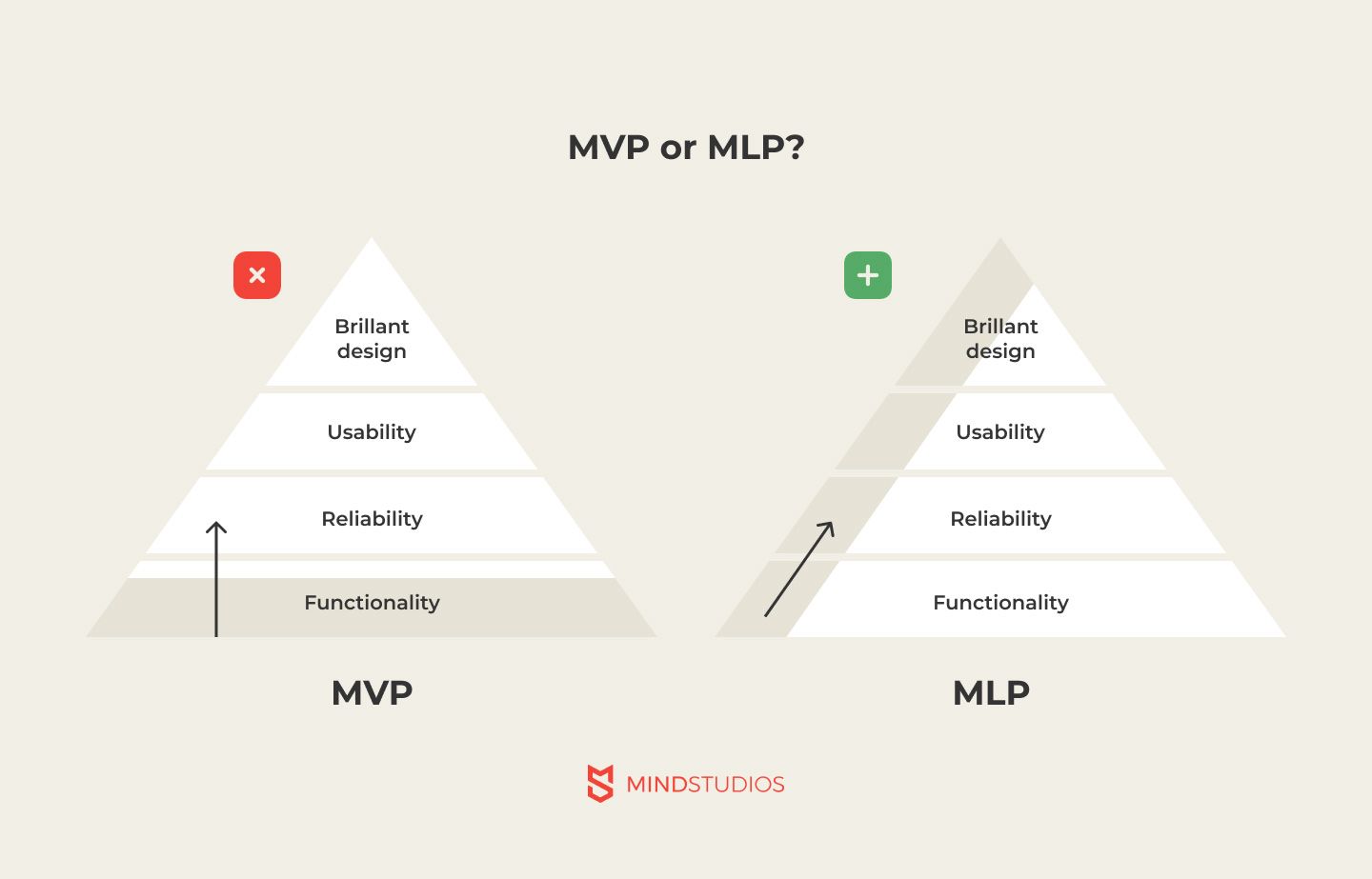
At Mind Studios, we can offer to launch an MLP instead of MVP. An MLP is a minimum lovable product. In a nutshell, it's a version of a product that has the absolute minimum of features but they're chosen and built with the intention to catch the users' emotional response.
On an oversaturated market, it's vital to be not just noticed but remembered. While MVP is focused on basic functionality and foregoes anything else, MVP is built with core features and unique design. MLPs are made to be intuitive, eye-pleasing, and overall offer a user experience that makes users want to come back to the app and eagerly expect new features and full launch.
Clubhouse's design is minimalistic, to say the least. It might play in its favor, though — it does stand out for its utter simplicity. But you can consider making your app both highly intuitive and trendy-looking. Experienced UI/UX designers can help you with this.
Step 3. Design and development
The design and development stage is the longest one in app creation. Designs are usually made in stages as well:
-
Navigation concept / Low-fidelity prototype
-
Medium-fidelity prototype
-
High-fidelity prototype
Low-fidelity prototypes can be hand-drawn on paper or a planning board, or they can be digital sketches. The point of a low-fidelity prototype is to establish the basis for user experience design — the relations between screens and which button leads where.
Medium-fidelity prototypes have a basic user interface but are usually black-and-white. Their aim is to make sure that the team and the app owner see the app the same way.
High-fidelity prototypes offer a somewhat finished design. It's also a fairly popular option to make high-fidelity prototypes in the form of app mock-ups or bots. With the option to click/tap through screens, the developers can offer these prototypes to a test group for appraisal.
At the same time the designers work on prototypes, the project manager will discuss the development with the app owner. One of the important questions to answer will be the platform to develop for.

If you have money to spare, it's recommended to develop for both iOS and Android simultaneously. However, if you'd like to save, you can start with the platform used most by your target audience and expand later when you've started to get revenue and maybe found funding.
That's what Clubhouse did, actually. Clubhouse today exists for iOS only but the Android app is said to be in development after receiving $100 million funding from Andreessen Horowitz venture capital firm:
— Mopewa (@mopewa_o) February 23, 2021~some personal news~ (are we still doing that 👀)
Today was my first day at @joinClubhouse
If you know me, you probably know I have *opinions* about iOS only apps 😆 so I'm v. excited to be joining the team to bring the party to Android ✨
Cost-wise, Android and iOS development aren't very different: iOS development is generally more expensive and takes longer but Android apps take longer to test instead.
As of January 2021, Android is more popular worldwide with 71.93% of the mobile OS market. However, the situation by country may wary: as per Statista, in the US, the share of iOS devices is 56.22% to Android's 43.5%.
Step 4. Feedback and iteration
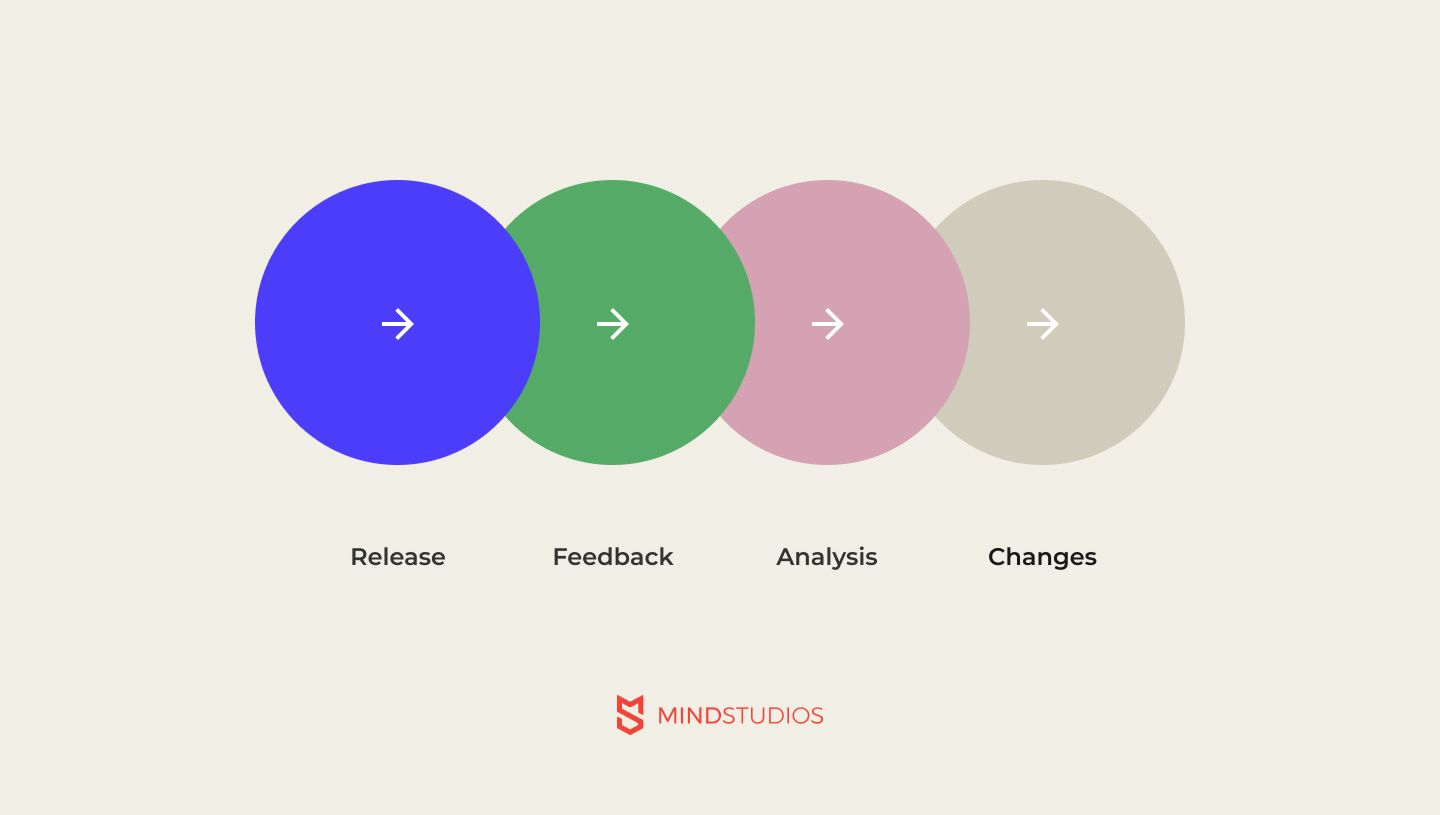
During the first stage, the market research, you and the team will settle on the metrics to follow for assessing the app performance. For an app like Clubhouse, the metrics can be:
- Number of downloads
- Activation rate
- Sticking rate (how regularly users open your app)
- Session length and intervals
- Daily sessions
- Screen flow (great for evaluating user experience)
- Bounce rate
Having launched an MVP or MLP, the next step is to monitor its performance and gather user feedback. This is essential for further development. In particular, user feedback can point out any UX drawbacks and help prioritize features for the next release.
If you've launched a marketing campaign for your app at any stage, its results will also contribute to the overall feedback.
After gathering and analyzing performance and feedback, it's time to go back to Step 3 and make changes for the next iteration of the app. Rinse and repeat.
The technical side of developing a Clubhouse-like app
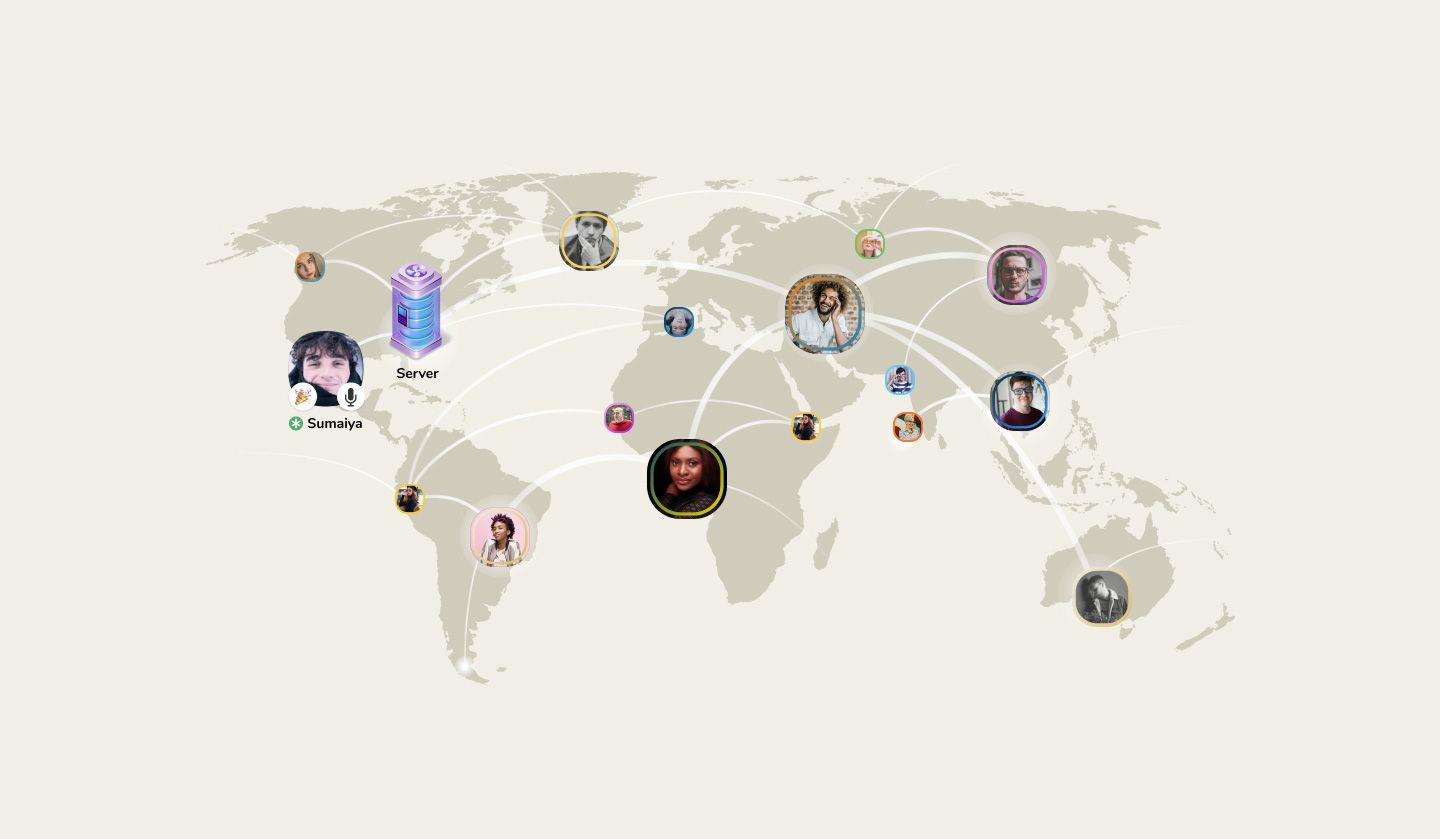
The most important part of developing an audio social network is providing quality audio streaming. In a nutshell, an app like Clubhouse works as follows:
-
A user creates a space for communication and sends an audio feed to the server.
-
The server serves as a passthrough and a distributor of sorts, sending this audio feed to everyone who's in the room.
Clubhouse officially doesn't record audio, nor does it store it anywhere, which makes it impossible to listen to a conversation at a later time. This means that if you decide to develop a mobile app similar to Clubhouse, you won't need powerful servers for storing audio data.
However, you will need solid servers to distribute quality audio to many users — some rooms in Clubhouse gather thousands of listeners. You might consider using a Content Delivery Network (CDN) — a service with numerous servers around the world that can help speed up content delivery by using a server that's close to a given user. CDNs are widely employed by streaming services like Twitch and Netflix.
As for Clubhouse, rumors have it that the app was built in about a week using an API by the Chinese company Agora. We say "rumor" has it because the Clubhouse developers are sitting tight on their tech stack and as of the time of writing, no information about Clubhouse's building blocks has been officially confirmed or denied by either Agora or Clubhouse owners. But these rumors have been investigated by the reputable Stanford Internet Observatory and have seemingly proven true.
Agora.io is a service that offers a software development kit for video and audio calls as well as live audio and video streaming, messaging, and analytics. It is, however, a Chinese company, which might not be suitable for everyone, seeing as it has faced some controversy around the topic of Chinese government surveillance.
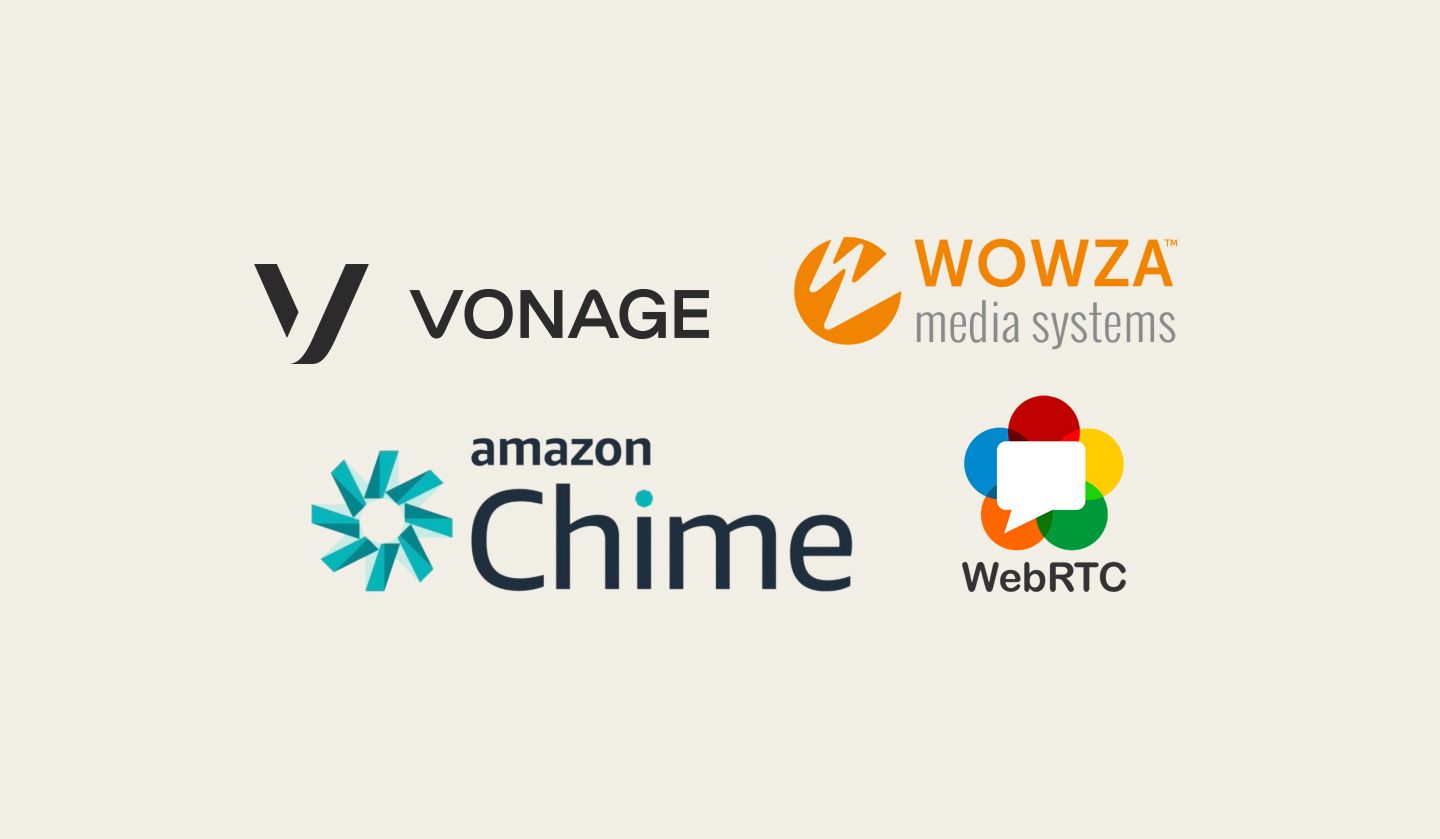
But Agora, of course, isn't the only option to build a chat app like Clubhouse. Here are some close competitors that offer similar services:
-
Vonage (formerly known as OpenTok), a US-based communication API provider
-
Wowza, also a US-based company, whose solutions are employed, among others, by Facebook, Vimeo, Periscope, and NBC Universal. Wowza offers a CDN as well as communication APIs.
-
Amazon's proprietary Chime SDK
-
If you're building a web analog to Clubhouse, the most straightforward option is WebRTC (which is actually used for web communication by several of the services mentioned here, including Wowza and Agora itself).
These services all offer high-quality kits for developers to make a drop-in audio chat app. The differences are mostly in code particularities and prices.
Your chosen app development company should suggest the service most suitable for your needs and budget.
Cost to make app like Clubhouse
To make ypour own app like Clubhouse, you'll need a team of specialists. If you're going for an iOS app to contest Clubhouse itself, here's who you'll have to employ:
- 1 project manager
- 1–2 iOS developers
- 1 backend developer
- 1 UI/UX designer
- 1 quality assurance specialist
All things considered, the time to build an audio social network like Clubhouse for iOS only will be approximately 1,240 hours. With this estimate, the cost to develop a mobile app like Clubhouse will be about $43,400 for iOS. Adding Android will increase the cost but not double it, since the apps will use the same back end and similar design.
Web apps are the quickest and cheapest to build, although, for audio social network, the web should probably be a secondary platform.
If you choose to cover all platforms, Android, iOS, and web development can all be conducted simultaneously.
Conclusion
The long pandemic has made us thirsty for spontaneous and random communication to balance out strictly scheduled work-related Zoom meetings and mundane chatting on messengers and traditional social networks. Podcasts are great and educational, but they just don't translate the feeling of belonging or participating the way Clubhouse does — even if you don't actually speak up in Clubhouse rooms, you still feel like you can.
That's why in the circumstances we've found ourselves in, Clubhouse has become a unicorn startup despite lacking things considered must-haves in a social network like file sharing, video, and even text chats.
Besides, social media app development has been on the rise, and Clubhouse is just a new look at the same craving for communication we've been having for a while. It might be the future before us, too.
Mind Studios developers have experience with both communication apps and streaming platforms. We know how to create an app like Clubhouse.
How To Make A Clubhouse
Source: https://themindstudios.com/blog/how-to-make-a-voice-chat-app-like-clubhouse/
Posted by: carpenterhices1941.blogspot.com

0 Response to "How To Make A Clubhouse"
Post a Comment